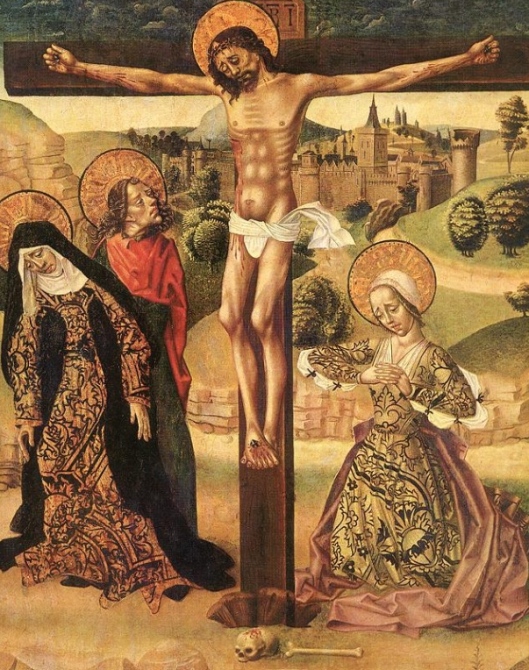Apologies for my absence. Personal circumstances since the end of 2013 have made it difficult to keep up with postings on here. I hope, however, to be back regularly from now on.
With it being Good Friday, my attention has been turned to the Crucifixion lyrics that I teach as part of our second year Medieval to Early Modern literature. We spend two weeks on ‘forms of piety’, examining the ways in which medieval and early modern writers expressed their faith. We also spend a lot of time talking about the possible ruptures between the medieval and early modern periods as a result of the Reformation, asking how the religious shifts during this period might have affected every day religious practices. To be honest, it’s probably the toughest two weeks of the course. A combination of a reduced religious literacy amongst my students combined with a cynical attitude towards religion more generally means that they often struggle to engage with this material and its context. My colleague, Dr Sarah Macmillan, whose specialises in working with late medieval religious material, is brilliant at leading students through the complexities of these weeks, and I’ve learned a lot from her over the past eighteen months.
One of the ways in which we’ve tried to help our students is to combine the study of medieval incarnation and crucifixion lyrics with a study trip to the Walker Art Gallery in Liverpool. Students are given the opportunity to work both with the lyrics that have been set as reading for the class, but they are also required to combine these readings with study of late medieval artwork and artefacts. What we finding these sessions is that students begin to appreciate more the interrelationship between text and image, and that they become increasingly interested in the role of affect in early expressions of piety. While this is emphasised by the immediate presence of the visual material in the gallery (and by the way, the collection at the Walker is really quite impressive if you get the opportunity to visit), what strikes me the most when we look at the Crucifixion lyrics is how students begin to engage in deeper close reading of the Middle English as a result. Many of the lyrics that we ask them to read are quite short (4 lines or so), and initially students have very little to say about them. By the end of the session,they are thinking about the ways in which a seemingly simple lyric becomes particularly effective (and affective) because of its initial simplicity. That kind of development over the course of a couple of hours is wonderful to see and be part of, and, as a result, those sessions are often the ones that I enjoy the most. I’m also repeatedly struck by the ways in which the shorter lyrics can elicit complex emotional responses as I’m reading them, and one of my favourites is a four-line lyric that depicts Mary at the foot of the Cross. On Good Friday, I leave you with it:
Nou goth sonne under wod;
Me reweth, Marie, thi faire rode.
Nou goth sonne under tre;
Me reweth, Marie, thi sone and thee.

